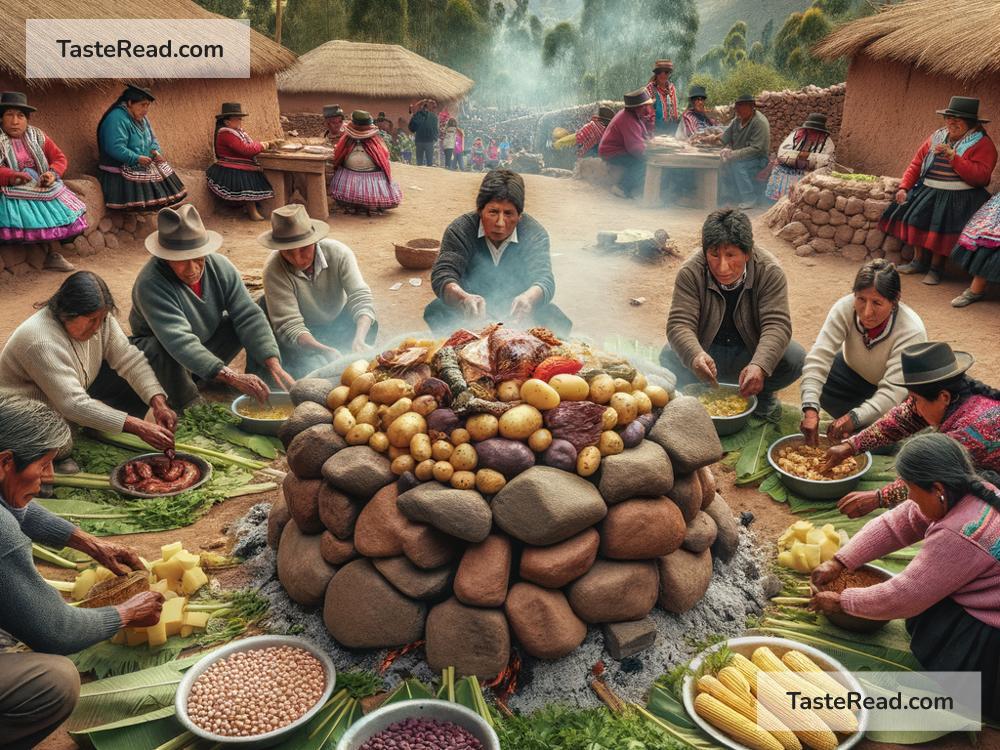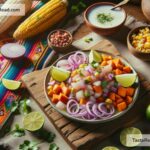Discovering Peruvian Pachamanca: An Ancient Earth Oven Cooking Method
Peru is a country known for its rich history, breathtaking landscapes, and unique culinary traditions. When it comes to food, Peruvian cuisine is one of the most diverse and flavorful in the world. Among its many gastronomic treasures is pachamanca, an ancient cooking method that uses an earth oven to create delicious, smoky, and tender dishes. Pachamanca is more than just a cooking technique—it is a celebration of tradition, community, and the connection between people and nature.
What Is Pachamanca?
Pachamanca is a Quechua word that means “earth oven” or “earth pot.” Quechua is the language of the Indigenous people of the Andes, who have been cooking pachamanca for centuries. This traditional way of cooking involves burying food underground and cooking it using hot rocks. It is a technique that reflects the deep bond between the people and the land, honoring Pachamama, the Earth Mother in Andean culture.
This cooking method has been passed down from generation to generation. It takes patience, skill, and teamwork, which is why pachamanca is often prepared for special occasions, such as festivals, family gatherings, or celebrations.
The Pachamanca Process: Cooking with Nature
Making pachamanca is a fascinating process that brings people together. It starts with digging a hole in the ground to create the oven. After that, the following steps are taken:
-
Heating the Rocks: Special stones, usually volcanic or river rocks, are gathered because they can hold heat without cracking. A fire is built in the pit using wood or charcoal to heat the rocks until they are burning hot. These rocks will cook the food evenly and give it its signature smoky flavor.
-
Preparing the Food: Pachamanca is a feast of flavors and ingredients. The most common foods cooked in pachamanca ovens include:
- Meat: Lamb, pork, chicken, or even guinea pig (known as cuy in Peru) are marinated with herbs and spices such as garlic, black pepper, cumin, and traditional Andean herbs like huacatay (a Peruvian mint).
- Potatoes: Peru is home to thousands of potato varieties, and potatoes are a key ingredient in pachamanca. They are often cooked whole or in their skins.
- Corn: Ears of corn, known as choclo, are wrapped in husks for cooking.
- Sweet Potatoes and Yams: These add a delightful sweetness to the mix.
- Beans: Sometimes, broad beans (haba) or other legumes are included for variety.
-
Plantains: In some regions, bananas or plantains are added for extra flavor.
-
Layering the Oven: Once the rocks are hot, they are arranged in the hole. A layer of food is placed directly on top of the rocks, followed by another layer of hot rocks. This layering creates the unique oven structure.
-
Covering the Oven: To trap the heat and ensure the food cooks properly, the pit is sealed. Banana leaves, corn husks, or wet cloths are often used to protect the food. Then, dirt or grass is piled on top to form an airtight seal.
-
Cooking Time: The food is left to cook for about one to two hours, depending on the size of the pit and the amount of food inside. The heat from the rocks, combined with the natural insulation of the earth, ensures that everything cooks evenly and absorbs the smoky, earthy flavors.
-
Unveiling the Feast: Opening the pachamanca oven is the most exciting part! With careful teamwork, the layers are removed to reveal the perfectly cooked meal. The aroma of fresh herbs, spices, and meats fills the air, creating a moment of joy and anticipation.
Why Is Pachamanca Special?
Pachamanca is not just a cooking method—it’s an experience. Preparing pachamanca is usually done outdoors, making it a communal event that blends food, storytelling, and shared traditions. Family and friends gather to help dig the oven, heat the rocks, marinate the food, and enjoy the results together.
This ancient cooking method connects modern Peruvians to their roots. It reminds them of Pachamama, the earth, and the importance of respecting and caring for nature. The food cooked in pachamanca ovens carries the spirit of tradition and the love of everyone who worked to prepare it.
Where Can You Try Pachamanca?
If you ever visit Peru, experiencing pachamanca is a must! Many rural areas in the Andes offer pachamanca as part of cultural tours or celebratory events. Some Peruvian families also host pachamanca meals during traditional gatherings. You can try delicious meats, potatoes, and vegetables cooked in this natural method. You’ll gain a deeper understanding of Peru’s history and its people through this unique culinary tradition.
Bringing Pachamanca to Your Kitchen
While building an earth oven may not be practical for everyone, you can try creating your own version of pachamanca at home. Use a grill or a smoker to replicate the smoky flavors. You can marinate meats with Peruvian spices and serve them with potatoes, corn, and beans. While it won’t have the exact flavor of food cooked underground, it’s a great way to honor this ancient tradition.
Conclusion
Pachamanca is more than a meal—it’s a cultural treasure that combines food, history, and community. The earthy flavors and the joy of sharing this experience make it a unique and unforgettable culinary adventure. Whether you enjoy pachamanca in Peru or try your own version at home, you’ll get a taste of the connection that Andean people share with the land and each other. Pachamanca reminds us that food is not just about eating; it’s about celebrating life and traditions.


